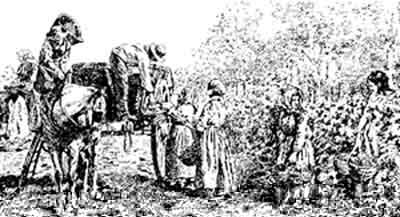| HOME | WINES | HISTORY | EXPORT |
|---|
The oldest vineyard in the Pyrenees was re-established in 1999, with work done to clear the land, level and prepare for planting. After site preparation in 1999 the first Tempranillo vines were re-planted in the Spring of 2000. Dr Richard Smart (internationally renowned viticulturist) completed a study on world climates and comparisons with Spain indicate that the Avoca region is one of the closest of all Australian regions to the Rioja region - the home of the ultra-premium Spanish wines: www.smartvit.com.au.
MACKERETH HOUSE HISTORICAL VINEYARD – HISTORY (an except from the official Geographic Indication application for the PYRENEES 1998) The man with the best claim to be the district’s pioneer wine maker was a farmer, Edwin Horatio Mackereth, born in Yorkshire in 1828. He worked on his father’s farm, until the prospect of gold and a new life lured him to Australia in the early 1850’s. Edwin and his German born wife Catherine settled on a block of virgin land about two kilometres west of Avoca which he named Hedon Farm in 1860.
In 1890 Mackereth sold five dozen bottles at 14 shillings a dozen to the Wise’s general store in Avoca. Sons, Edwin, John and Charles, were proprietors of the Avoca Vineyard "from the great days of the nineteenth century until about 1930". Edwin, a member of the Victorian Police Force, resigned from it to become a vigneron; and John, a teacher of drawing and music, joined Edwin in 1908 after Charles died at the age of twenty-eight. Prior to this they knew little about viticulture although they considered it highly profitable. They used the "Pinneau" (Pinot) for their red wines and also made Port from the same variety. Their wines met with great success and many proved to be prize-winners overseas. But problems arose: local consumption was limited and with costs mounting and income falling they found it difficult to afford the machinery necessary for an efficient enterprise. Some of it they made themselves, "even cutting gear cogs by hand from discs of red gum". In 1920 The Mackereth enterprise comprised 40 acres bearing vineyard, but these were lean years for the wine industry which saw the price of wine fall, moves towards prohibition, and the closure of many small wineries. The winery then "had a storage capacity in excess of 91,000 litres and supported three wine shops in Avoca. Eventually they could no longer survive as vignerons and began negotiations to sell out to Seppelts. The sale fell through … (and) Seppelts turned their attention to Hans Irvine’s Great Western vineyards … Many years later another surviving Mackereth brother, Alfred, who was not a vigneron at all but a bank manager, recalled the fate of the property to wine historian Sam Benwell. The wine they had made was good but the consumers were too few. Costs were rising and income was falling. Producing wine efficiently required technology which was expensive. Broken parts were difficult to replace. In addition there were difficulties associated with frost and birds. It all became too much. In 1929 Mackereth sold the property. The new owner was a dairy farmer, a Mr Dawson, who had no intention of carrying on the business of growing grapes or making wine. Given a declining market for wine why should he? Had wine making been a viable activity then undoubtedly the property would have found a buyer as a going concern. As it was John Mackereth sold the wooden casks and wine making equipment separately, some of them to another winery that had since sprung up in the district, Kofoed's. The large stone winery and cellar complex which was distinct from the homestead was not part of the sale. It survived a couple of years more until John Mackereth removed parts of the structure selling them at auction. This interesting industrial building which was admired by Romeo Bragato did not survive. All that remains today is a gaping rectangular hole. Cattle were then turned in on the vineyard and, eventually, the vines were grubbed out. The homestead which is among the oldest in the district survives, but in a run-down condition, as do the homestead cellars. Perhaps one day Avoca's premier vineyard will once again produce wine.
|





